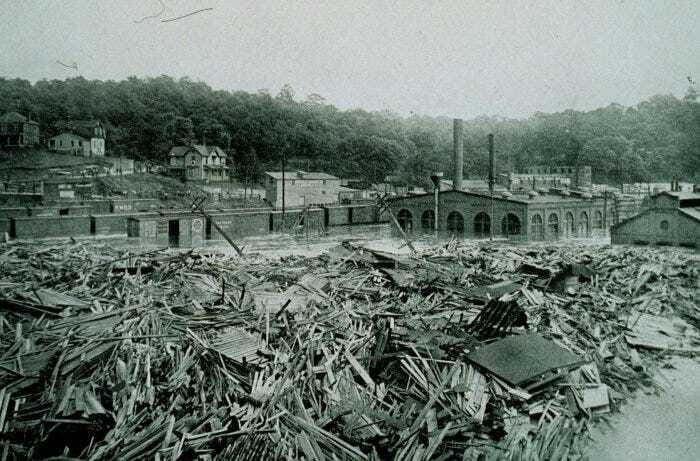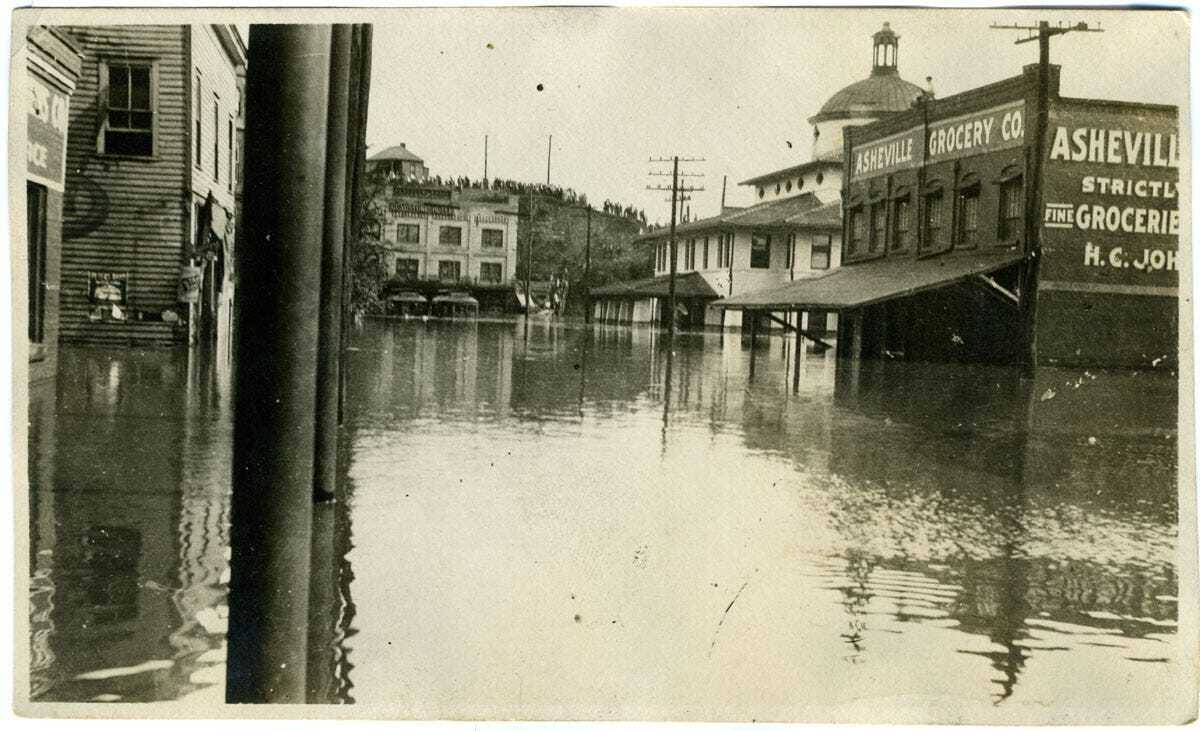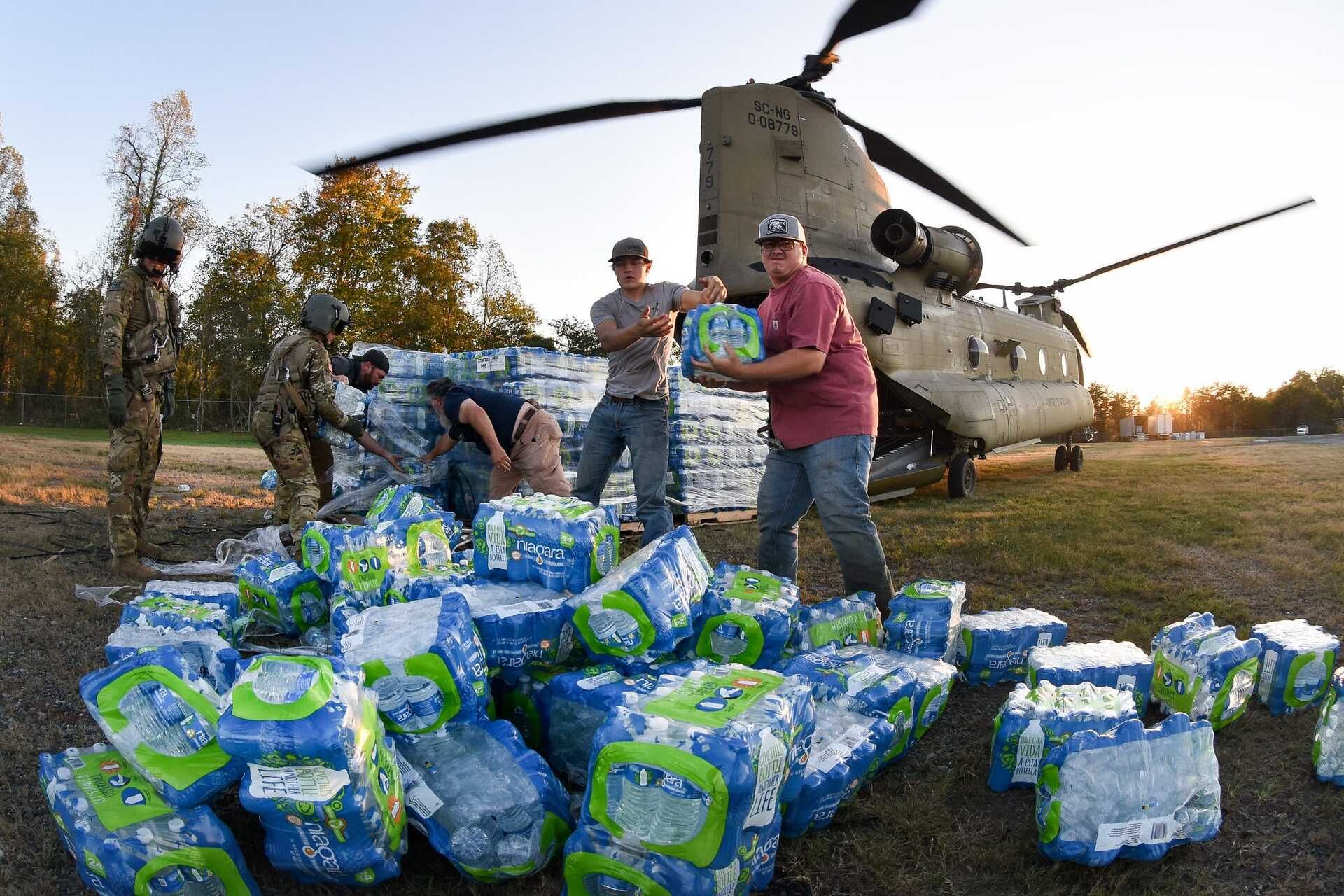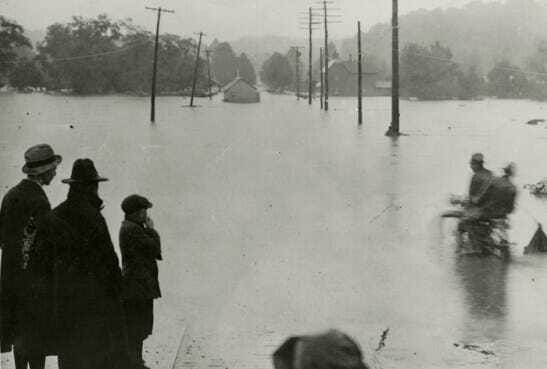
Last week, the Trump administration denied what could amount to hundreds of millions of dollars in aid for Western North Carolina, which is still cleaning up after Hurricane Helene. Basically, FEMA wants to match 90% of the expenses that state and local governments are paying for recovery, which includes debris cleanup. FEMA says it usually only matches 75%, but made an exception for Hurricane Helene. North Carolina wants 100%, which FEMA denied, first in April and again last week after an appeal. “So far, we have removed more than 12 million cubic yards of debris from roads and water ways, but given the immense scale of the wreckage, we have only scratched the surface,” Gov. Josh Stein said in a statement. “The money we have to pay toward debris removal will mean less money towards supporting our small businesses, rebuilding downtown infrastructure, repairing our water and sewer systems, and other critical needs.” In all, Stein says he wants Trump and Congress to send $19 billion to help clean up and rebuild.
The floodwaters from Helene have long since receded, along with the wall-to-wall coverage of the storm and its immediate aftermath. The amount of progress, help, and reconstruction has been remarkable. But a lot of people in Western North Carolina are still living with the effects of Helene every day. Homelessness in Buncombe County has tripled since the storm. As of April, a majority of small businesses in Western North Carolina reported that they hadn’t yet received what they needed from insurance companies, federal grants, or loans. More than 100 people died in Western North Carolina. More than a million cubic yards of debris has been pulled out of Lake Lure, and crews are still pulling out more, eight months after the storm. The businesses that weren’t destroyed in Chimney Rock are still mostly closed, and the state park nearby hasn’t reopened. More than 7,000 private roads and bridges need to be repaired. Local leaders in Burnsville and Yancey County think it might take a decade to fully recover from Helene.
It feels like Helene is a storm with no comparison, but that’s not exactly true. A century ago, the remnants of a huge tropical storm rolled through Western North Carolina and devastated the area. That event, the Flood of 1916, was eerily similar, and although we’ve come a long way in technology, weather forecasting, and sheer population growth, there are a lot of parallels in the recovery.
My search for lessons from that storm led me to Anthony Sadler, whose research as a master’s student earned him an Outstanding Thesis Award from Appalachian State University in 2016. A few months ago, I tracked down Sadler, who now works for a local school district in Anchorage, Alaska. “My research focused specifically on the recovery,” he told me. Back then, federal aid was much smaller, which led to clear winners and losers that created what we think of as modern-day Asheville. And even though things have come a long way in the 109 years since, there are some striking differences along with some eerie similarities. “Humans have hubris,” Sadler said. “They feel like they can control it. There's always a moment like the 1916 disaster that proves: Nope. You actually don't have a handle on this thing.”
Or, more succinctly: “Water always wins.”
This conversation has been edited for brevity and clarity.
RABBIT HOLE: In a general sense, what was the response to the flood in 1916? Where would you start?
ANTHONY SADLER: I would start with the idea that 1916 is at the tail end of the progressive era. Progressives were people who sold optimism about the future at the expense of the present and past. It's always: Move forward. Don't look back.
The South took on that traits of the Southern business progressive, which is very much like a Faulknerian character. The suited bespectacled guy who rolls into town and says capitalism is going to save the rural community. That sort of energy was what Asheville fed on at the time. It had transitioned entirely into a Southern progressive city.
Pre-flood, right up to that weekend in July of 1916, the idea was: We're going to clean this city up. We're ready for the future. We're primed to be the number one destination in the country. These dirty industries that are along the river are going to be a detriment to us. That's going to hold us back.
The way that they went about making that reform was by essentially taking over every aspect of people's lives. Government elites—the folks who are running the government in Asheville and elsewhere—are also starting up these charities. They're the head people in the churches. They're the head business owners in the area. So you have one person who might be the mayor, but they also might be the pastor at the large church. They also might be the owner of the number one store in town. And they and their wife probably run the number one charity in town as well.

That's the biggest parallel to today: The populism aspect of this, which is its reform. It is undoing what people thought at that time was bad about our country. It is reversing hundreds of years of progress in a certain way. We're going to now dramatically shift it over the course of ten years to an entirely new trajectory. And that shock that creates causes racial tension and economic tension and all kinds of of social issues within our whole nation, not just in the South.
They're already at the point where they've shifted everything, and their system is supposed to support everybody. Even segregation was sold as a way that all races could be better off; that it's actually the mixing that's making it worse for us all. These systems they put in place were supposed to support society better than all the prior systems.
This disaster puts that to test. It says, okay, pony up. You're creating social systems that are supposed to support people. Welfare systems, essentially. Well, let's see if that actually does support everybody.
You have some people who are in incredible need. And other people who aren't even touched by it. That relationship between those two groups—which by any kind of social contract should be one where you have mutual benefit—was thrown out of the window. And that was driven by the ideology of that progressivism, which is a populist movement.
That's a long story. But essentially you have no separation between the state and every aspect of organized life. Any kind of recovery effort was hindered by the ideology that leads those organizations. Because they fell across racial lines, that meant white people got a lot, and non-white people didn't get much at all. It leaves people to have to fend for themselves in a way that is going to be really dictated by their privilege or lack of privilege. So you're going to have an uneven recovery.
RABBIT HOLE: What did aid look like in the time after the 1916 flood? Obviously a lot of the organizations that we have today didn't exist back then.
SADLER: Banks only existed to support those who owned businesses and had enough collateral or liquid assets to be able to support the bank. If you lost everything that you owned, banks were not an option for most people. They were only an option for people who already had a lot of wealth, or for people who lost nothing.
So for many people in Asheville, there was no possibility of getting back what you lost. You just had to handle that loss. You had to recover some way on your own because nobody's going to really help you out with it. There was no way of getting money.
You do get savings and loans opening up to help people who aren't wealthy enough to have bank support to go into some type of long-term recovery. That's something that ties into a longer story: The origins of Bank of America came from an Italian immigrant savings and loan that helped after the 1906 San Francisco earthquake and fire. But savings and loans still required people to have something they could put up for collateral. If you lost literally everything you owned, there's not much you can do.
So what did aid actually look like? There was coal dispersal. Everything was run on coal at that time because weren't enough trees to burn. You're talking about a completely deforested Appalachia by 1916. Coal is what you use to cook. It's what you use for fuel. There's no electricity in any real sense in the area. So if you don't have coal, then you don't have food. You don't have the ability to take care of yourself. You don't have the ability to warm up a bottle of milk or to boil water so it's clean to drink. So they were giving out coal.
The other aspect was: They did have supplies within the community, even though Asheville was cut off from all trains for several weeks. The supplies that were in the markets at the time? Companies donated them. I mean, they were selling some, but they were donating essentially what they could because frankly, it was going to spoil. You did have some food and supplies, but not a ton.
Outside of town, people still had some livestock. But people were fending for themselves to a certain extent. You had clean linens and clothes and those basic things just like you would now. Those were being donated by companies to the associated charities. Some places were turned into shelters. All Souls Church was probably the most prominent one. People were allowed to stay there. More often, families took in flood victims.
So that was it. You're talking about coal. You're talking about some food that is available that companies are willing to donate, along with linens and clothes and just things to keep warm. And you're talking about shelter in the form of either a church, or people who are willing to take in flood victims throughout the city. That's what it looked like.
At that time, the Red Cross existed, but without the ability to come in any real meaningful way with the loss of the trains. This is largely before roads. And this is pre-FEMA. At that time, Congress literally had to pass a bill to aid in a disaster. Whatever aid might come would depend on how long it takes for Congress to realize something needs to be done, to act on it, and to pass a bill. Then they had to actually mobilize any kind of aid, which usually was in the form of the Army Corps of Engineers or the National Guard or something along those lines. But there isn't something set up and ready to go when a disaster happens. It's very much a case-by-case basis.

Today, there’s an entire industry based on disasters, because they happen so frequently. Businesses have an arm that aims at disaster relief, whether it's Tide coming in and giving free packs of detergent, bringing washers in, and taking care of people's clothes. Or it's Budweiser giving out cans of water. You have commercial involvement with this recovery. You didn’t have that in 1916 because no corporations are really that big at that time. They had already busted up all the gilded age monopolies. You didn't have Standard Oil anymore. Now, you do have corporations that can come in and actually play a big, big factor in recovery where you didn't before.
When you look at what the community is doing, I mean, there were people dying every day who were trying to help flood victims. There were people going out in boats and trying to get people from the tops of the roofs of their houses where they had climbed up on and were stranded. They they were very focused on making sure that everybody was accounted for, even if they lost their lives. And so the community members pulled together to take care of their own in that way.
That ran along racial lines. There are stories—and I found several of them that are hard to trace—of African-American communities coming together, helping each other out, and arriving in town from a long ways away. You did have people traveling on foot and doing whatever they could to get into Asheville, just trying to find other Black folks to help.
Recovery also ran along patriarchal lines and paternalistic lines of the day. As in: Some of the resorts were hurt. So you had the resort owners who were going out and helping their employees, Black or otherwise. They're helping their own.

Today there are stories where you had people who rented U-Hauls and went to Costco and collected money. Drag queens did that just to help the LGBTQ community in Asheville. You have communities taking care of each other similar to what the Black community tried to do for itself in 1916, but there are more resources out there. And with the area being not being cut off from society, there's more of a chance of that broader community to actually have an impact, especially in individuals lives.
So while they might be heroic, those efforts from corporations and individuals and all that probably didn't do as much good as what was really needed. My personal take here and elsewhere is that it's really on the government, because it's the only entity that's supposed to be responsible for all, as opposed to specific churches or companies or other organizations.
RABBIT HOLE: It sounds like there's some similarities with Helene, in that there were a lot of people who were helping their neighbors. There were large mobilizations of drives for supplies. And I think the aspect of it that doesn't seem present at all in 1916 is: Let me give you some money to help you get back on your feet. It doesn't seem like there's any consideration of that.
SADLER: No. I make a point in the thesis, and I think even now there's a point to make about this: Recovery is limited by what benefits the whole over individuals. For instance, if you're looking at Asheville, the overwhelming majority of effort was put into reestablishing train lines, communication, safety, lights, and commerce. How do we reconnect the city to the rest of the region so that we can get businesses back up and running? Which is important. Those businesses support the town, especially since the citizenry of Asheville was dependent on the market and the government. They were less self-sufficient than they had been a generation prior. They needed these things running so that they could have a life. So that's where the majority of the government-directed efforts were going. In my thesis, the spotlight is on the government, because the government is promising prosperity for all and then not delivering on it.
If you lived closer to downtown—which meant that you were more likely to be a Southern progressive because they were the ones who revitalized and created downtowns in the way that we think of them today—then you were doing pretty well. You were up on the hill. You weren't really directly affected by the flood. You were affected by being cut off from trains and lights and all that. But you were not directly in harm’s way. Those people are the ones who took over the way things were done. And those people have very different ideas about the direction of the city, and who should and shouldn’t be helped. And that’s when you get into that idea of: Well, these people are lazy and these people aren't. They had very progressive mindsets about that. It was based on stereotypes or on the type of work people did, not on actual need.
RABBIT HOLE: So in 1916, there wasn’t as strong of a government response. The money wasn’t flowing in. Who wins and who loses?
SADLER: Naomi Klein is somebody who is certainly controversial in the sense that she's very much an activist. But in her book The Shock Doctrine, she uses the term “disaster capitalism.” She uses the BP oil spill in the Gulf of Mexico as her primary example. The idea is that in a capitalist society, what happens when you have a clean slate situation is: Somebody wins from it. It's not that they planned the disaster, but they were able to capitalize on it.
In Asheville, that story has to do with tourism. Those people who were promoting tourism who were not affected negatively by the flood in 1916. They were able to re-imagine the area by the French Broad River and turned it into the River Arts District from the River Industrial District. They promoted Asheville, saying: We're back open. Come on up here. Everything is good. They were pushing for roads. You get the Good Roads Movement, which allows them to be really primed for automobile tourism. And so there's ways that disaster capitalism really helped Asheville for a long time. They came out of it and were able to become what they are today.
I think you'll have a similar thing that's happening now. Who's really capitalizing here? Who's really benefiting from this situation where you have open space along the river that wasn't there before? I think about Swannanoa and what's happened down that river chain. There are opportunities happening there because people have been uprooted. I think that that's the story to track. What does Asheville and the area really do to maneuver? Who's going to take advantage? How's that going to change the shape of that area, both physically and socially speaking? What does it become as a result?
After 1916, a lot of the diverse people within Asheville left. It led to less diversity, but ultimately less infighting as a society, although you do get some uprisings in the twenties. But by the thirties, because of the effect of segregation, Asheville is predominantly white. I think that you'll probably see similar things where people who are already struggling, or who might have been viewed as a negative were pushed out. They're not going to be able to make their way back in because of it.
I wonder about the impact of this flood on the politics in Asheville right now, especially regarding the federal government and any reversal of some of the progressive tactics that were put in place after the first flood: The idea that we need more support from the federal government, not less. I’d imagine with this flood, the worst of the social aspects of it—and that includes how recovery happens—come out of fear. From that fear, you get a distrust of government and individuals. There's always somebody that the government wants to blame as the real culprit. That's probably going to be very similar to 1916, where people blamed poor management of dams up river. Why did bridges fail? Why did the disaster have to be as bad as it was?
I was even reading an article recently that said they didn't expect last year’s floods to happen. In 2016, one of the few things we all agreed on was that something like this would happen again. The convention and visitors bureau types wanted to act with hubris. As if to say: Oh, we got it taken care of. The city and state disaster management people were like, we learned from this and we can do this now. But there were some areas that they had not really considered, based on their own hubris. What's happened is that hubris has been exposed, and that people who had their businesses in flood zones and lost everything really did not know that it was a possibility. It's the responsibility of the government to at least make people aware that these types of things can happen.
The number one thing that is an issue in the mountains, and will always be an issue in the mountains? The reason why these disasters are greater and greater? There are more and more people in the flood zones. There are way more people whose lives were uprooted because of this than in 1916, because more people are encouraged and brought in to move into these areas with volatile environments. It's a flood prone city. It always will be a flood prone city.
Folks who have a ton of money and collateral and are part of corporations? They're going to be just fine. But your small business owners—like I think about these like e-bike tourist companies that were wiped out—they're not going to come back soon, if they do at all. In 1916 the people in [what’s now] the River Arts District were the most vulnerable people. It was people who lived in cotton factory houses. In our society today, they're small business owners. They're artists. They're people who don't own a lot. In 2024, it was artists who were renting a small space in a large building. Or people who had saved up to open up a brewery. They don’t have a ton of liquid money to support themselves for years without income. And when this happens again, they're going to be the ones that lose everything.
